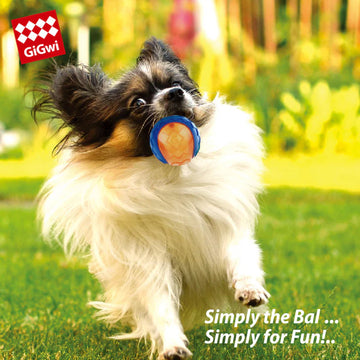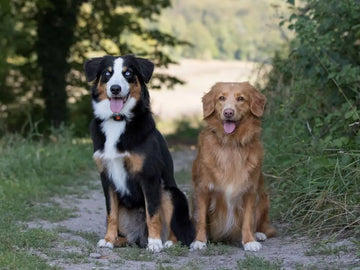Teaching your dog to fetch a toy is a rewarding way to bond, exercise, and stimulate your furry friend. However, not all dogs instinctively know how to fetch, and many need encouragement and training to understand the game. In this guide, we’ll cover how to teach your dog to fetch in simple, fun steps. With the right approach, a bit of patience, and some dog fetch toys your dog loves, you’ll be able to enjoy this classic game together.
Step 1: Choose the Right Toy
Before you start, choose the right dog fetch toys. Some dogs are drawn to tennis balls, while others may prefer rubber balls, squeaky toys, or even Frisbees. Experiment to see what excites your dog. Ideally, you want a toy that’s easy for your dog to carry, safe, and durable. The best dog fetch toys are often ones that are the right size for your dog—too big can be hard to handle, and too small might pose a choking hazard. Toys with unique textures or squeakers may also capture their interest more effectively.
Step 2: Encourage Interest in the Toy
To teach your dog to fetch, they need to be interested in the toy first. Play with the toy yourself, making it look lively and exciting. Use upbeat tones and, if possible, squeak the toy to catch their attention. Once they show interest, let them sniff, chew, or tug on the toy lightly to get them more engaged. This interaction builds a positive association, increasing their motivation to participate.
Step 3: Introduce the “Take It” Command
Once your dog is interested, start teaching the command “Take it.” Hold the toy in front of them and encourage them to grab it. When they do, praise them and give a treat. Repeat this several times until your dog understands that “Take it” means they should grab the toy.
If your dog is hesitant, try placing a treat near or inside the toy to increase their interest. Keeping sessions short and positive helps keep them engaged—remember, training should be fun for both of you!
Step 4: Teach the “Bring It Back” Command
Now that your dog understands how to grab the toy, you can teach them to bring it back. This step is often the trickiest, as some dogs like to grab the toy and run off or drop it too soon. Use the command “Bring it back” or “Come here” as you call them to return. If they come back with the toy, praise them and give a treat. You can also walk backward to make it seem like a game, encouraging them to follow.
If they’re reluctant to return, try using a leash to guide them gently, rewarding them once they’re back with the toy. This helps reinforce the concept of returning to you with the toy in their mouth.
Step 5: Practice “Drop It” for the Exchange
Teaching your dog to “drop” the toy is essential for smooth fetching. Use the command “Drop it” when they bring the toy back and gently take it from their mouth. Immediately praise them and give a treat when they let go.
If they’re hesitant to release, avoid pulling the toy from their mouth, as this could lead to a game of tug-of-war. Instead, offer a treat close to their nose as an incentive to let go. With practice, they’ll learn that “Drop it” leads to rewards, making the fetch game smoother.
Step 6: Start with Short Throws
Once your dog understands the commands, start throwing the toy a short distance. Say “Fetch!” as you toss it and encourage your dog to chase it. When they pick it up, call them back and go through the “Bring it back” and “Drop it” steps. Keep initial throws short, gradually increasing the distance as they grow more confident and responsive.
If they ignore the toy or seem confused, try running alongside them or tossing the toy in an easy-to-reach spot to boost their confidence. Dogs learning fetch often respond better with short throws initially.
Step 7: Use Positive Reinforcement and Consistent Rewards
Throughout the training, use positive reinforcement to reward good behavior. Whenever your dog brings the toy back, follows a command, or drops it on cue, praise them enthusiastically or give treats. This reinforcement helps them understand they’re doing something right and strengthens their motivation to fetch.
Avoid punishment or frustration if your dog doesn’t get it right away. Every dog learns at their own pace, so keep sessions fun and engaging. Limit each session to 10-15 minutes to avoid tiring them out or losing their interest.
Step 8: Add Variety and New Challenges
As your dog masters the basic fetch skills, add variety to the game to keep it exciting. Try using different dog toys for variety, or experiment with new locations like the park or the beach. Throwing the toy into areas where they need to search, such as tall grass or sand, can increase their excitement and engagement.
Introducing commands like “Wait” or “Stay” before they’re allowed to fetch adds an extra challenge and reinforces obedience skills. This variety can help keep their attention and add a layer of mental stimulation.
Step 9: Troubleshooting Common Fetch Issues
Some dogs may struggle with certain parts of fetch. Here are a few tips for common issues:
- Not Bringing the Toy Back: If your dog grabs the toy but doesn’t bring it back, practice recall exercises separately. Call them back with treats and praise, reinforcing the “Bring it back” command.
- Ignoring the Toy: If your dog isn’t interested in the toy, try using a high-value treat or a toy with a scent they like. You can also try one of the best dog fetch toys with features like a squeaker or unique texture to grab their attention.
- Not Dropping the Toy: If your dog won’t release the toy, practice “Drop it” with rewards. Use treats as a trade, teaching them to let go on command.
Why Teaching Fetch is Beneficial for Dogs
Teaching your dog to fetch is more than just a game; it has multiple benefits for both physical and mental health. Fetch provides exercise, which is crucial for their health, helping them burn off energy and stay fit. Mental stimulation from following commands and solving simple challenges in the game also keeps their mind sharp and engaged.
Playing fetch can also strengthen your bond and improve communication, as you and your dog learn to understand each other’s signals. Additionally, fetch is an excellent outlet for high-energy or working breeds, helping to prevent destructive behaviors often caused by boredom.
Final Thoughts
Teaching your dog to fetch may take some time, but the effort is well worth it. Fetching isn’t just a fun activity; it’s an opportunity for bonding, exercise, and training all rolled into one. By using the right toys, positive reinforcement, and a patient approach, even dogs that don’t naturally fetch can learn to love the game.
Remember to keep each training session positive and enjoyable. With time, practice, and a lot of praise, your dog will soon understand the joy of fetch. Grab some best dog fetch toys and enjoy a playful, healthy activity that brings you and your furry friend closer together!










